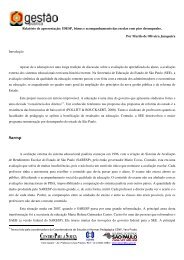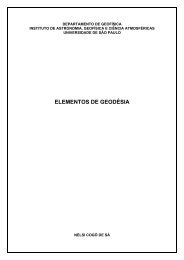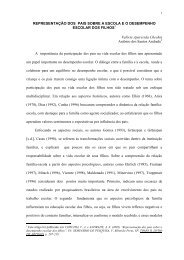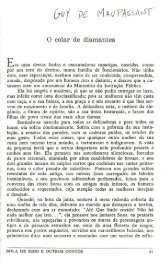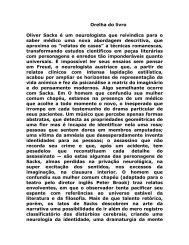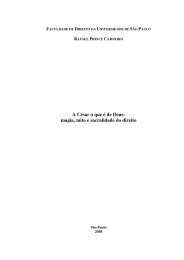A HISTORY OF MODERN IRAN - Stoa
A HISTORY OF MODERN IRAN - Stoa
A HISTORY OF MODERN IRAN - Stoa
You also want an ePaper? Increase the reach of your titles
YUMPU automatically turns print PDFs into web optimized ePapers that Google loves.
“Royal despots”: state and society under the Qajars 29<br />
Turkic-speaking city of Tabriz. 72 Forsome,lutiswerefolk-heroes;forothers,<br />
they were no better than thugs. The term eventually became synonymous<br />
with petty thievery and knife-wielding (chaqukeshi).<br />
Tehran contained five separate wards or mahallehs – Ark (Citadel),<br />
Bazaar, Ud Lajan, Chal Maydan, and Sangalaj. The 1885 census of Tehran –<br />
the first ever taken – calculated the population to be 147,206. 73 The five<br />
wards were surrounded by a polygon-shaped wall twenty feet high and<br />
eleven miles long. Each ward had its own outer gate. Ark had additional<br />
fortifications to defend the royal compound with its palace, workshops,<br />
granaries, armory, mint, imperial mosque, Cannon Square, and the Drum<br />
Tower from which, every sunset, kettle drums and blaring horns heralded<br />
the shah’s royal presence. Tradition claimed that this ritual originated<br />
from Zoroastrian times. Ark also contained a recently built Haussmanlike<br />
avenue connecting Cannon Square with the Dar al-Fanon, Government<br />
Theater, Cossack barracks, police headquarters, foreign office,<br />
telegraph office, and the British-owned Imperial Bank. Thus Ark became<br />
known as the “government” as well as the “royal mahalleh.” In contrast, the<br />
Bazaar mahalleh was formed of narrow winding side-streets full of homes,<br />
stores, workshops, and specialty market places. Guild members tended to<br />
live and work in the same side-streets. It also contained the execution square<br />
and the main caravansary – traditional hotel for travelers. The other three<br />
mahallehs were less distinctive. They housed notables with mansions and<br />
large gardens – many streets were named after such resident notables. They<br />
also had mosques, shops, public baths, bakeries, and takiyehs – often named<br />
after the community that frequented them. These wards were crisscrossed<br />
with side-streets, winding alleys, and cul-de-sacs – often ending at the gates<br />
of aristocratic mansions.<br />
Tehran’s census counted 101,893 home-owners and 45,363 renters – in<br />
other words, 70 percent were home-owners. Households were formed of<br />
extended families with at least ten members including servants. The census<br />
listed 47 mosques, 35 madrasehs, 34 takiyehs, 170 bakeries, 190 public baths,<br />
130 caravansaries, 20 ice-houses, 70 brick furnaces, 277 stables, and 160<br />
Jewish homes. It described 42,638 residents as aqayan va kasbeh (gentlemen<br />
and tradesmen), 756 as ghulam-e siyah (black slaves), 10,568 as nokar<br />
(servants), 46,063 as zanan-e mohtarameh (honorable women), 2,525 as<br />
kaniz-e siyah (black females), and 3,802 as kedmatkar (wage earners). It<br />
counted 1,578 Jews, 1,006 Christians, 123 Zoroastrians, and 30 “foreigners.”<br />
It estimated that new immigrants constituted as much as 27 percent of<br />
the population – 9,900 came from Isfahan, 8,201 from Azerbaijan, 2,008<br />
from the Qajar tribe, and the others mostly from Kashan, Kurdestan, and



